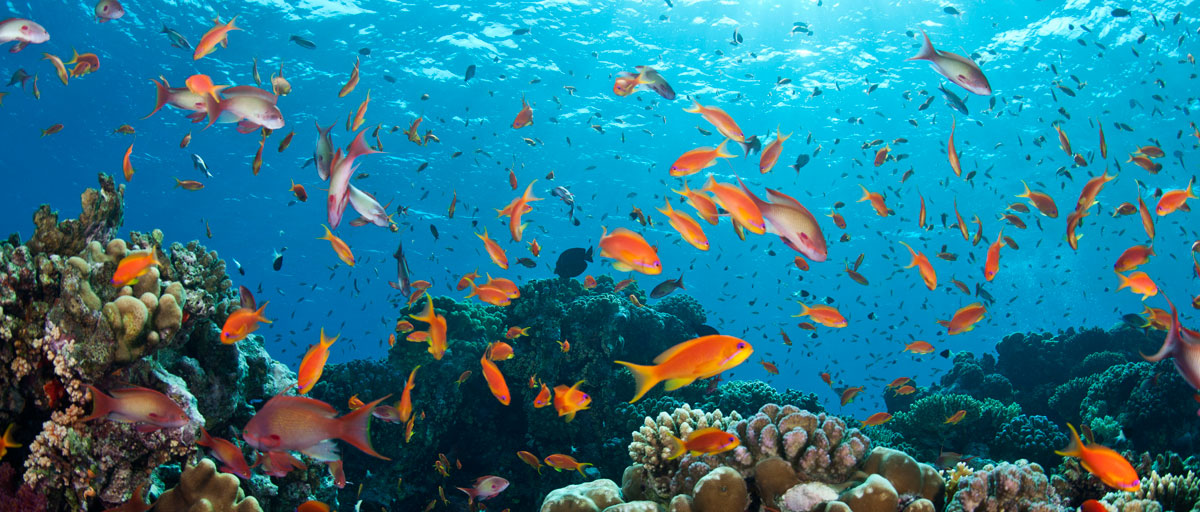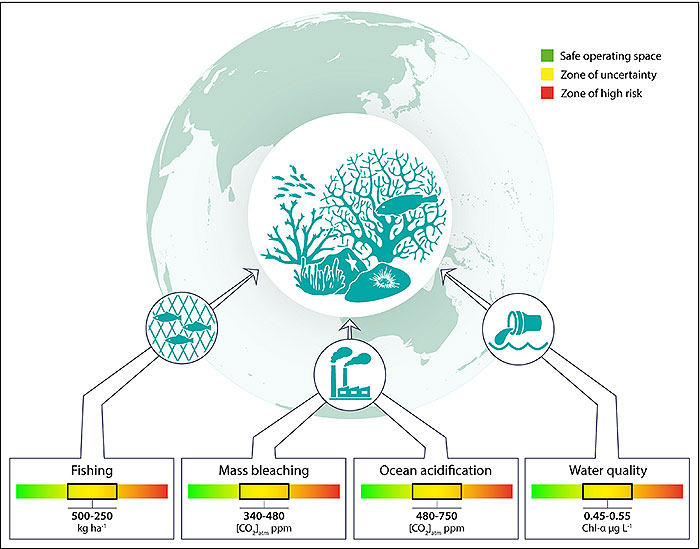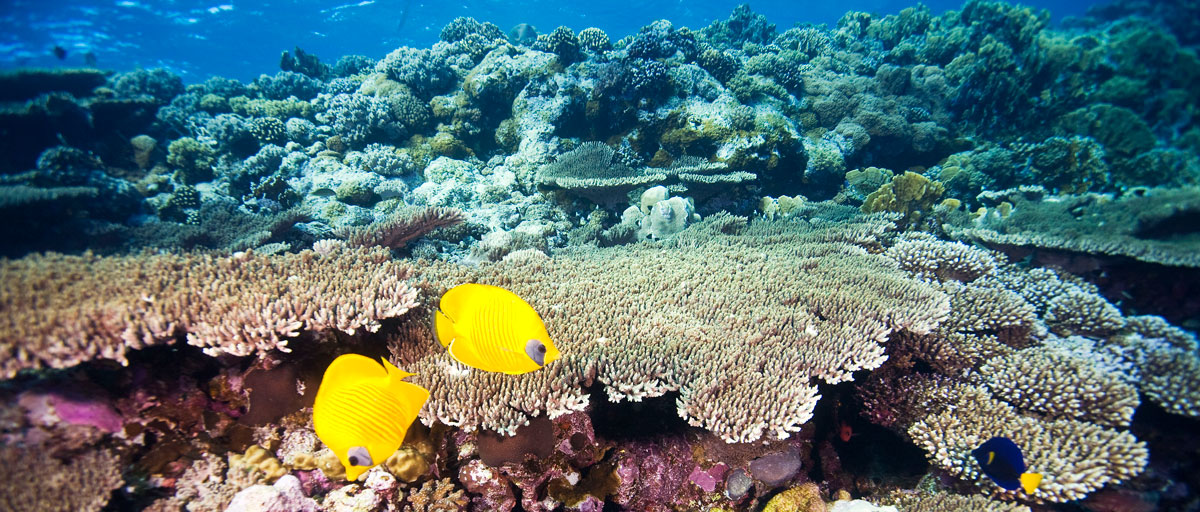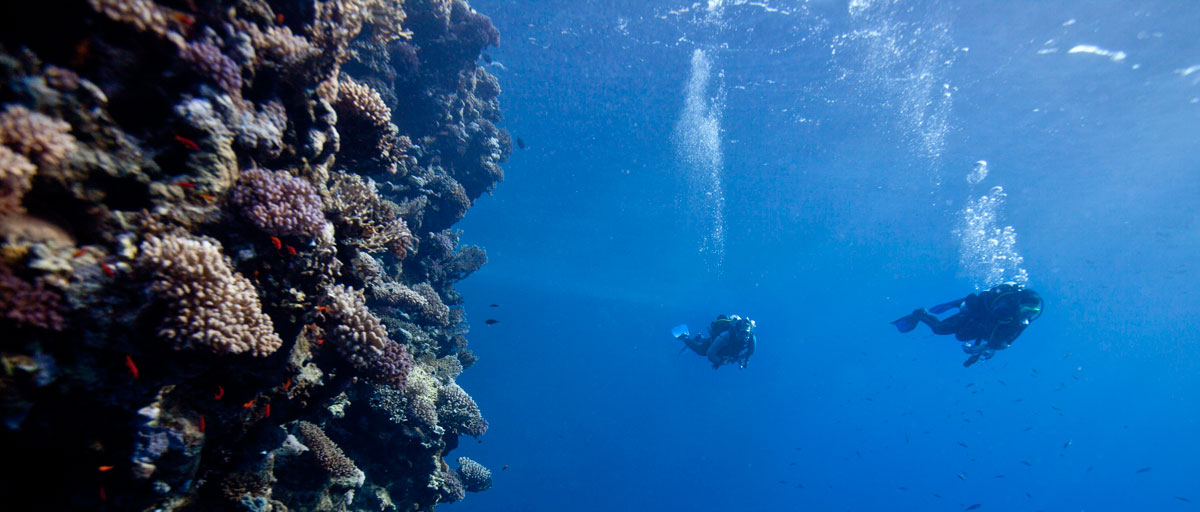
A new article published in Frontiers in Ecology and the Environment argues the many benefits reefs provide to human societies will require that fishing, water quality, and climate change stay within acceptable levels or ‘safe operating spaces’. Photo: B. Christensen/Azote
Bildtext får vara max två rader text. Hela texten ska högerjusteras om den bara ska innehålla fotobyline! Photo: B. Christensen/Azote
CORAL REEFS
Turbulent times
How much more fishing, nutrient pollution and climate change can the world’s coral reefs endure?
- Human pressures like fishing, nutrient pollution and global warming need to be kept at a “safe” distance from dangerous levels to ensure the future of coral reefs.
- Carbon dioxide concentrations should remain within or below 340–480 parts per million (ppm). Currently we are at 400 ppm and just experienced the most widespread coral bleaching in recorded history.
- To stay within these “safe operating spaces” and keep pace with escalating human pressures we need more research on social-ecological interactions and global cooperation.
This year’s coral bleaching event that destroyed vast tracts of valuable coral reefs, due to El Niño and climate change, was the most widespread in recorded history. Many now ask how much more warming in combination with overfishing, pollution and other human pressures the world’s coral reefs can endure?
The current state of knowledge is, for the first time ever, synthesised at a global level in a new article published in Frontiers in Ecology and the Environment by centre researchers Albert Norström, Magnus Nyström, Jean-Baptiste Jouffray, Carl Folke, Per Olsson and Fredrik Moberg. The study was a collaboration with colleagues from UK, USA and Australia.
Safe operating spaces
“Ensuring that reefs and the many benefits they provide to human societies endure will require that fishing, water quality, and climate change stay within acceptable levels or ‘safe operating spaces’,” says lead author Albert Norström.
Defining these safe levels is challenging because coral reefs in different parts of the world will respond differently to human pressures. There is also a lack of data and studies on how much reef organisms will be able to adapt to change.
"The values we provide should be regarded as guidelines, which will become more accurate with further studies and greater understanding"
Albert Norström, lead author
The concept of safe operating spaces follows the precautionary principle with the aim to confine human pressures far enough from really dangerous levels, or thresholds, that might trigger abrupt and permanent coral reef degradation. The team of scientists chose this approach because despite the importance of thresholds, and recent advances in predicting them, they are extremely hard to generalise globally.
Norström and colleagues hope that a better understanding of safe operating spaces might help bring issues of coral reef sustainability to the international negotiating tables. This is important because local management efforts alone will not be able to keep pace with the escalating speed of social, technological and ecological changes that challenge these safe operating spaces, they say.
“Conventional approaches like marine protected areas can offer local socioeconomic and ecological benefits, but are usually far too narrow in scope and small in scale, and often suffer from weak compliance and enforcement,” explains Magnus Nyström.

The study identified safe operating spaces, zones of uncertainty, and zones of high risk of the key drivers of change on coral reefs: (1) fishing, (2) water quality, and (3) climate change (ie mass bleaching and ocean acidification). Illustration: Azote
New kind of management
Coral reef management is, however, slowly shifting toward more holistic strategies that are collaborative, adaptive and target both social and ecological interactions on larger scales. This is crucial for coral reefs that are increasingly challenged by global drivers of change, such as trade, human migration, and land-use change.
On an optimistic note the study concludes that the socioeconomic and environmental issues facing reefs and other marine ecosystems are finally receiving a focus equal to land ecosystems. For instance, Goal 14 of the newly adopted United Nations Sustainable Development Goals encompasses ten targets for the oceans. Similarly, one of the Convention of Biological Diversity’s Aichi Targets explicitly calls for the minimizing of human pressures on coral reefs and maintenance of their integrity and functioning.
This recent global attention is crucial as reefs are no longer only suffering from impacts of overfishing and coastal pollution, which can be managed successfully at local scales. In an increasingly human-dominated environment these pressures are compounded by the more recent, superimposed impacts of global warming and ocean acidification.
Social-ecological approach
To keep human drivers of change within safe operating spaces, coral reef scientists should engage more in research with a social-ecological approach and not only on local and regional scales. More research in the field must be devoted to understand social and ecological interactions across scales, from local to global, and bridge this knowledge to key policy arenas.
“Coral reef scientists around the world should engage more with the international policy arena to work toward sharp reductions in greenhouse-gas emissions and the implementation of the Sustainable Development Goals,” adds Jean-Baptiste Jouffray.
Norström, A. V., Nyström, M., Jouffray, J-B., Folke, C., Graham, NAJ., Moberg, F., Olsson, P., Williams, G.J. 2016. Guiding coral reef futures in the Anthropocene. Frontiers in Ecology and the Environment








